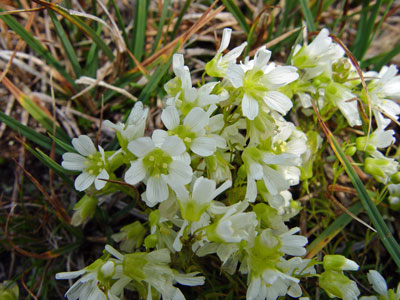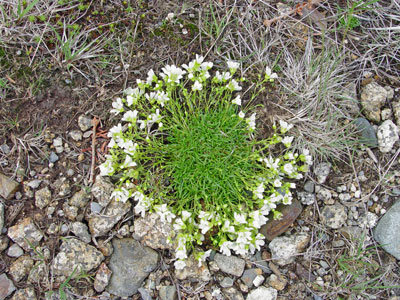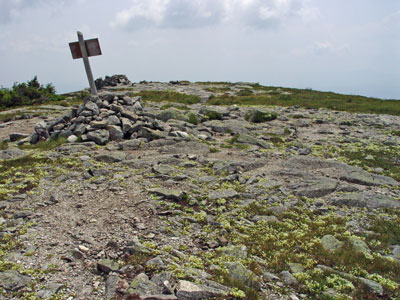DACF Home → Bureaus & Programs → Maine Natural Areas Program → Communities, Plants, and Animals → Rare Plants → Minuartia groenlandica

Minuartia groenlandica (Retz.) Ostenf.
Mountain Sandwort
- State Rank: S3
- Global Rank: G5
- State Status: Special Concern
Habitat: Granitic ledges and gravel. [Rocky summits and outcrops (non-forested, upland); Alpine or subalpine (non-forested, upland)]
Range: Greenland and Labrador to northern New England, New York, along coast of Nova Scotia to eastern Maine.
Aids to Identification: Mountain sandwort is a low-growing perennial with dense tufts of linear opposite leaves at the base. Its slender flowering stems with cymes of 1-30 white, five-petaled flowers rise 5-10 cm above the matted foliage. Minuartia groenlandica differs from M. glabra in that it has larger flowers (petals 6-10 mm long compared to 4-6 mm long) and more densely tufted leafy basal shoots.

Ecological characteristics: Mountain sandwort most often grows on relatively dry wind-swept exposures of acidic rock or gravel. In such habitats, it may be abundant forming extensive mats where the irregularities of the rock substrate afford it a niche. While its occurrence in Greenland and Labrador and at elevations above 1200 m in Maine indicate its tolerance for climatic extremes, it is probably restricted from less severe habitats by competition from other plants.
Phenology: A perennial, flowers June - September, fruits July - October.
Family: Caryophyllaceae

Synonyms: Arenaria groenlandica (Retz.) Spreng.; Porsildia groenlandica (Retz.) A. & D. Löve; Sabulina groenlandica (Retz.) Small.
Known Distribution in Maine: This rare plant has been documented from a total of 28 town(s) in the following county(ies): Franklin, Hancock, Knox, Lincoln, Oxford, Piscataquis, Sagadahoc, Somerset, Washington.
Reason(s) for rarity: At southern limit of range, habitat somewhat restricted.
Conservation considerations: Some populations could be threatened by heavy recreational (hiking) use of its mountain-top habitat, but the plant appears to cope well with moderate disturbance.